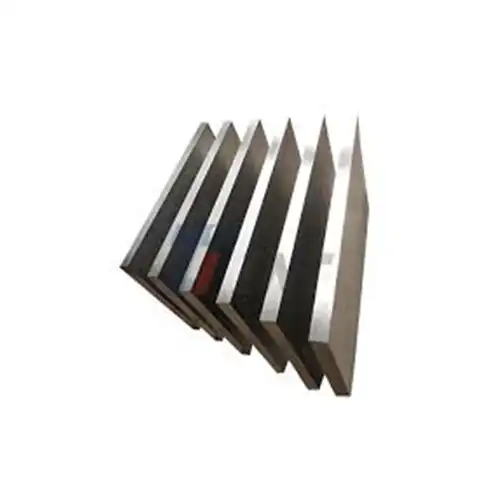The Evolution of Collar Bone Fracture Treatment
Collar bone fractures have been a challenging issue for orthopedic surgeons throughout history. In the past, conservative treatments such as arm slings and figure-of-eight bandages were the primary methods of managing these injuries. However, these approaches often led to suboptimal outcomes, including malunion, nonunion, and persistent pain.
With advancements in medical technology and surgical techniques, the use of internal fixation devices has become increasingly prevalent. Among these, titanium plate for collar bone has gained significant traction due to their unique properties and excellent clinical outcomes.
Titanium, a biocompatible metal with exceptional strength-to-weight ratio, has revolutionized the field of orthopedic implants. Its corrosion resistance and ability to osseointegrate with bone tissue make it an ideal material for fracture fixation devices, including plates used in collar bone repair.
Advantages of Titanium Plates for Collar Bone Fracture Repair
The use of titanium plate for collar bone fracture repair offers numerous benefits over traditional methods and other materials. These advantages have contributed to their widespread adoption in orthopedic surgery:
- Superior Strength and Durability: Titanium plates provide robust support to the fractured clavicle, ensuring stability throughout the healing process. Their strength allows for early mobilization and faster recovery times.
- Biocompatibility: Titanium is highly biocompatible, reducing the risk of adverse reactions and improving patient outcomes. This property also contributes to better osseointegration, promoting faster and more effective healing.
- Lightweight Design: Despite their strength, titanium plates are remarkably lightweight. This characteristic minimizes discomfort for patients and reduces the likelihood of implant-related complications.
- Corrosion Resistance: Titanium's excellent corrosion resistance ensures long-term stability of the implant, reducing the need for revision surgeries and improving overall patient satisfaction.
- Enhanced Imaging Compatibility: Unlike some other metals, titanium produces minimal artifacts in imaging studies such as CT scans and MRIs. This property allows for better post-operative monitoring and evaluation of the healing process.
- Customization Options: Advanced manufacturing techniques allow for the creation of patient-specific titanium plates, optimizing fit and function for individual cases.
These advantages have made titanium plates the gold standard for collar bone fracture repair in many orthopedic practices worldwide.
Surgical Techniques and Considerations
The surgical implantation of a titanium plate for collar bone fracture repair requires precision and expertise. Orthopedic surgeons employ various techniques to ensure optimal outcomes:
- Pre-operative Planning: Careful assessment of the fracture pattern and patient-specific factors is crucial. Advanced imaging techniques, such as 3D CT scans, may be used to plan the surgery and select the appropriate plate size and configuration.
- Incision and Exposure: A well-planned incision allows for adequate exposure of the fractured clavicle while minimizing soft tissue damage. The surgeon must carefully navigate around important neurovascular structures in the area.
- Fracture Reduction: Proper alignment of the fractured bone ends is essential for optimal healing. Surgeons use various techniques and tools to achieve anatomic reduction before plate fixation.
- Plate Positioning: The titanium plate is carefully positioned along the superior aspect of the clavicle. This placement provides maximum stability while minimizing the risk of hardware prominence or soft tissue irritation.
- Screw Fixation: High-quality titanium screws are used to secure the plate to the bone. The number and configuration of screws depend on the fracture pattern and plate design.
- Wound Closure and Post-operative Care: After ensuring proper placement and fixation, the surgical site is closed in layers. Post-operative protocols typically include early mobilization and physical therapy to promote optimal healing and functional recovery.
The victory of titanium plate obsession for collar bone breaks generally depends on the surgeon's aptitude and involvement, as well as the quality of the inserts utilized. High-quality titanium plates, such as those created by trustworthy producers like Baoji INT Therapeutic Titanium Co., Ltd., play a significant part in accomplishing amazing clinical results.
Baoji INT Medical Titanium Co., Ltd., established in 2003, has been at the forefront of medical titanium innovation for over three decades. Their expertise in titanium material research, development, and production ensures that surgeons have access to state-of-the-art implants for collar bone fracture repair. The company's commitment to quality is evident in their ISO9001:2015, ISO13485:2016, and EU CE certifications, guaranteeing that their titanium plates meet the highest international standards for medical devices.
As the field of orthopedic surgery proceeds to advance, the part of titanium plates in collar bone break repair is likely to grow advanced. Progressing investigation and improvement endeavors center on making strides in plate plans, improving surface medications for superior osseointegration, and investigating the potential of 3D-printed custom inserts.
Conclusion
The adoption of titanium plate for collar bone fracture repair has transformed the landscape of orthopedic trauma care. As we look to the future, continued advancements in materials science and surgical techniques promise to further enhance the efficacy and safety of these implants, ultimately improving the lives of patients suffering from clavicle fractures worldwide. For more information about high-quality titanium plates and other medical titanium products, please contact Baoji INT Medical Titanium Co., Ltd. at export@tiint.com.











 2025-08-27 13:33:06
2025-08-27 13:33:06

